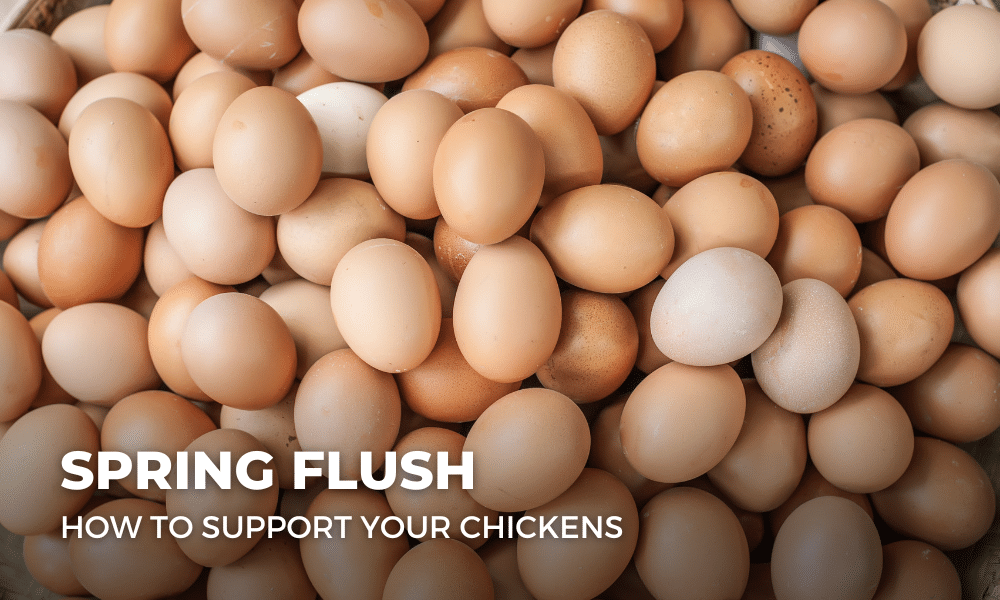
05 Sep Support your chickens during spring flush
What is spring flush?
What causes spring flush?
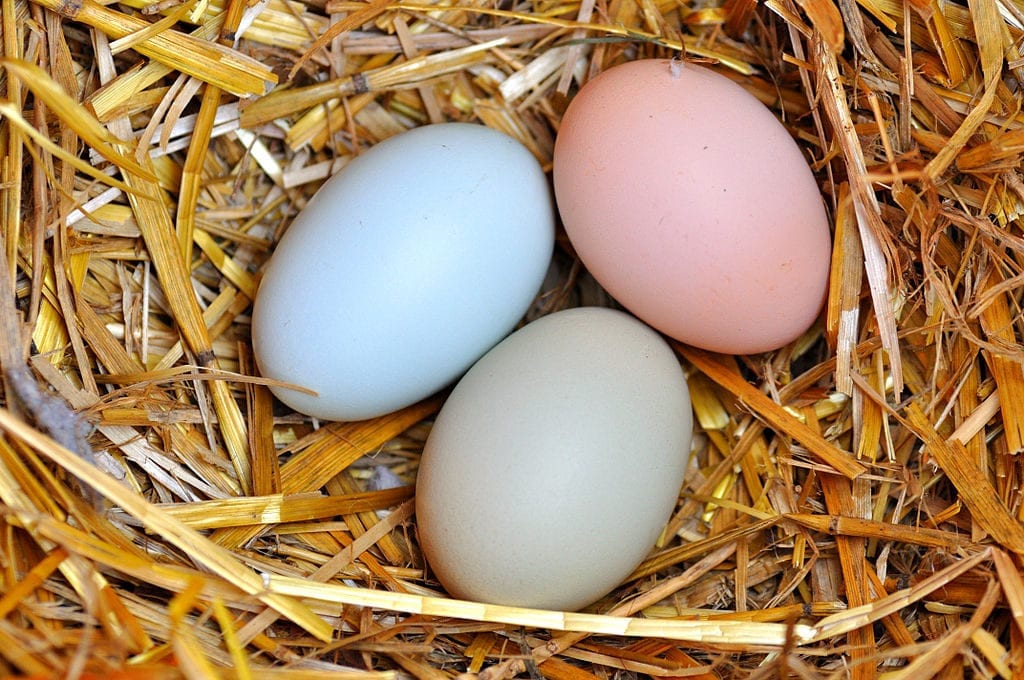
Supporting chickens through spring flush
A healthy chicken can lay somewhere between 4 and 6 (or more) eggs per week, depending on their age. Modern layers can produce this volume of eggs subject to getting an adequate and balanced diet. The two most important nutrients for egg laying are protein and calcium. Why??
A chicken needs protein for her own maintenance and body building (her first priorities) in addition to the amount required for egg production. Eggs are very high in protein and if we looked at some calculations, the average egg contains around 6.5g of protein. That protein put into making that egg needs to come from what your hen eats!
Did you know: The egg white contains 10% protein (and around 87% water). The egg yolk contains 16% protein (as well as 32% fat and 50% water).
So if a modern laying hen needs a MINIMUM of 15-16% protein in her 100g of feed each day, then during periods of increased laying (or increased protein use like moulting) a hen can actually benefit from even higher levels of protein in her diet. Having enough protein helps to support her health, function AND laying, and avoid depression of egg production.
The same is true for calcium, because a typical egg shell contains around 2.5g of Calcium. This amount (and more – around 4 grams due to inefficiency of converting feed Calcium into shell) is required for a good egg production and good quality of the shell. The hens usually have a Calcium reservoir in their bones which they can use, but it is fairly small; around 20 grams. It is rapidly depleted in the absence of a sufficient amount in the feed eaten by the hen. It is, therefore, extremely important to provide them with 4 grams of Calcium, (4% in 100 grams of feed), daily.
So in summary:
To help support your hens through spring flush, make sure you:
- Offer a high protein, high calcium complete laying feed
- Offer a complete laying feed ad lib. Chickens are great self regulators so will eat what they need
- Prioritise your laying feed over scraps and foraging. Most modern backyards and scraps offer low nutritional value to chickens, instead filling them up without the goodness. Offer a complete feed first before letting them out or offering scraps.
our spring flush essentials...
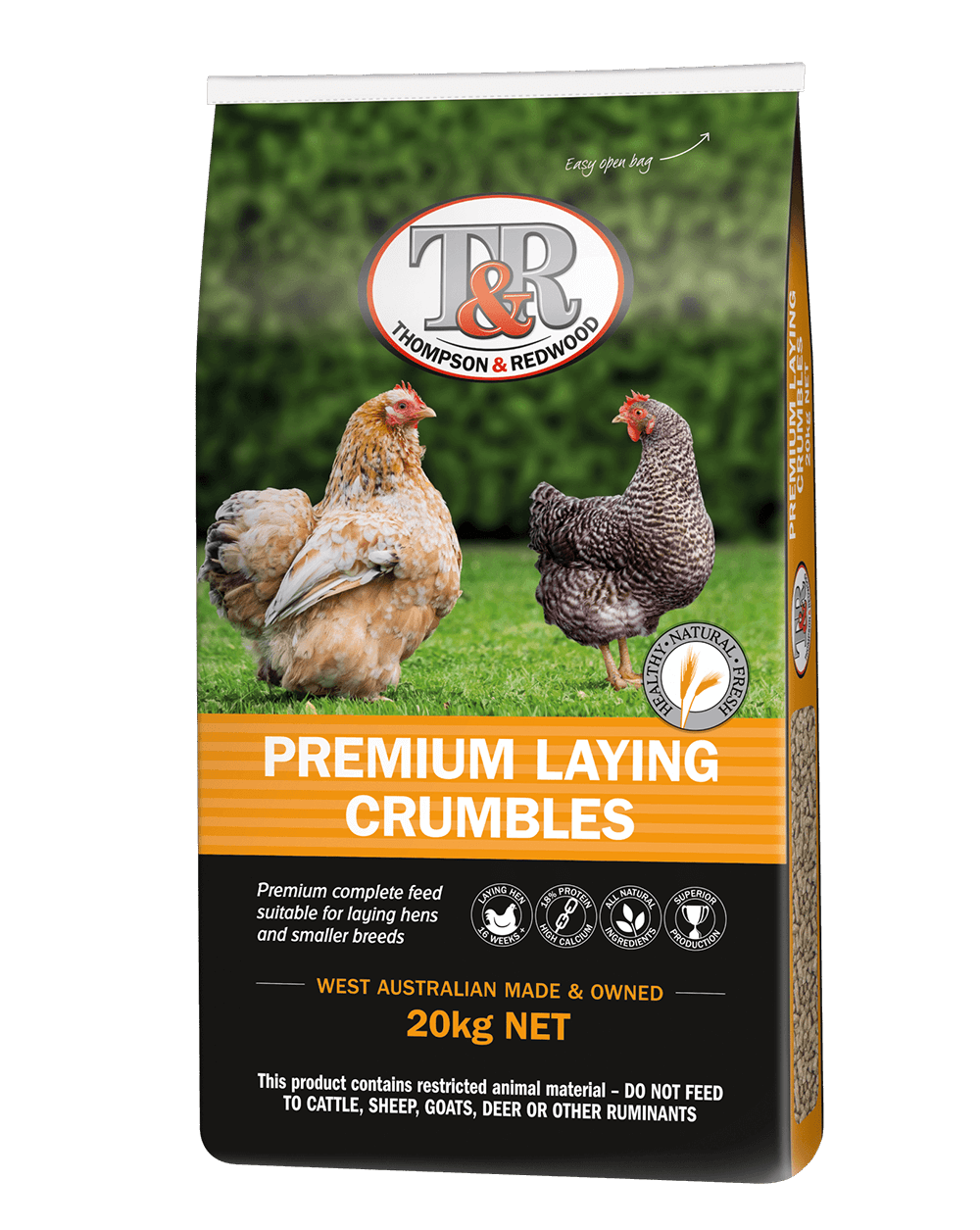
Premium laying crumbles
Premium laying crumbles are our high protein, complete and balanced laying feed in a crumbled form.
Containing minimum 18% protein and 4.1g of calcium to support superior health and laying.
Vegetarian feed
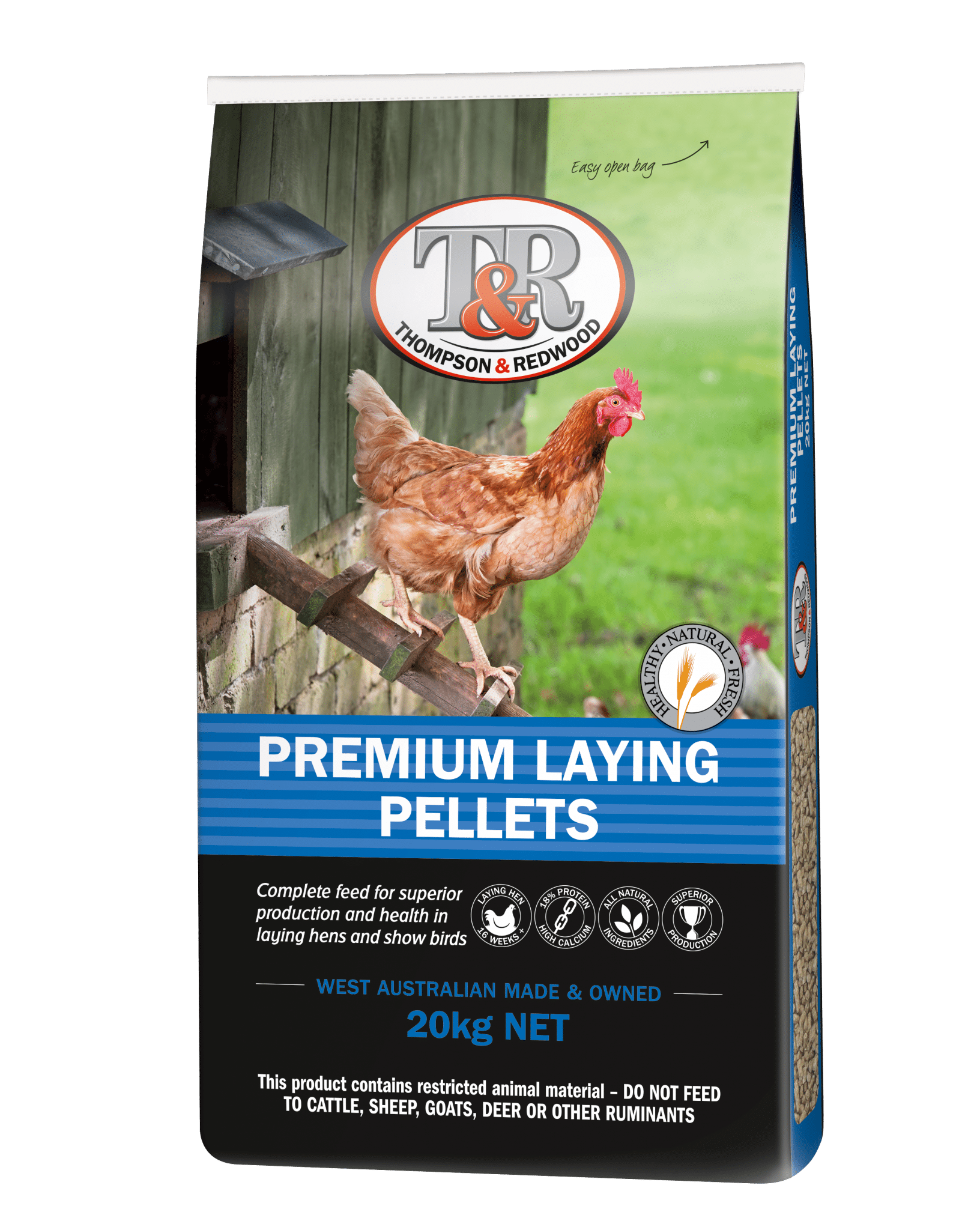
Premium laying Pellets
Premium laying Pellets are our high protein, complete and balanced laying feed in a crumbled form.
Containing minimum 18% protein and 4.1g of calcium to support superior health and laying
Vegetarian feed
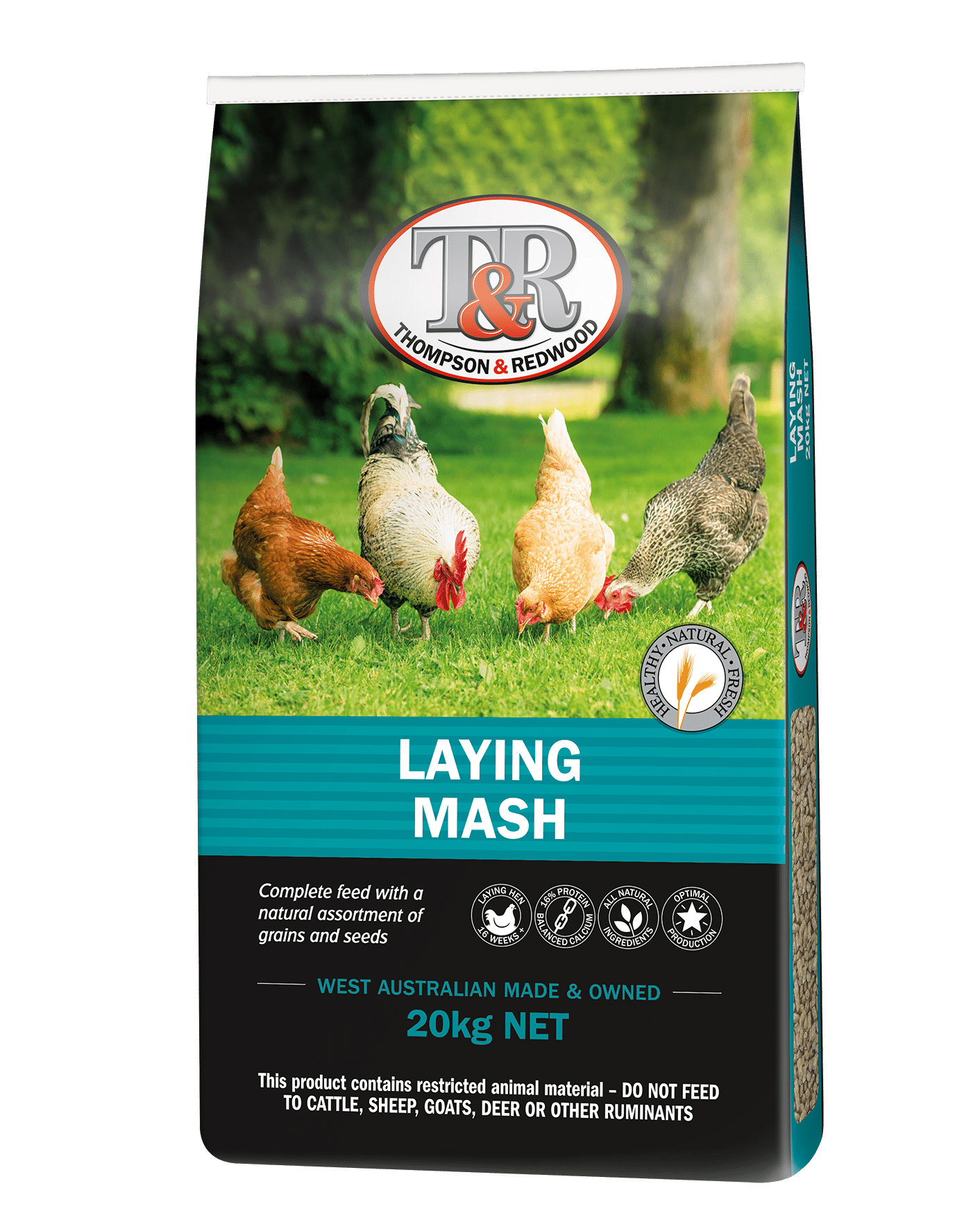
Laying Mash
Laying Mash is a high protein, complete and balanced laying feed in a mash form to encourage natural selection. Containing minimum 16% protein and 3.5g of calcium to support optimum health and laying.
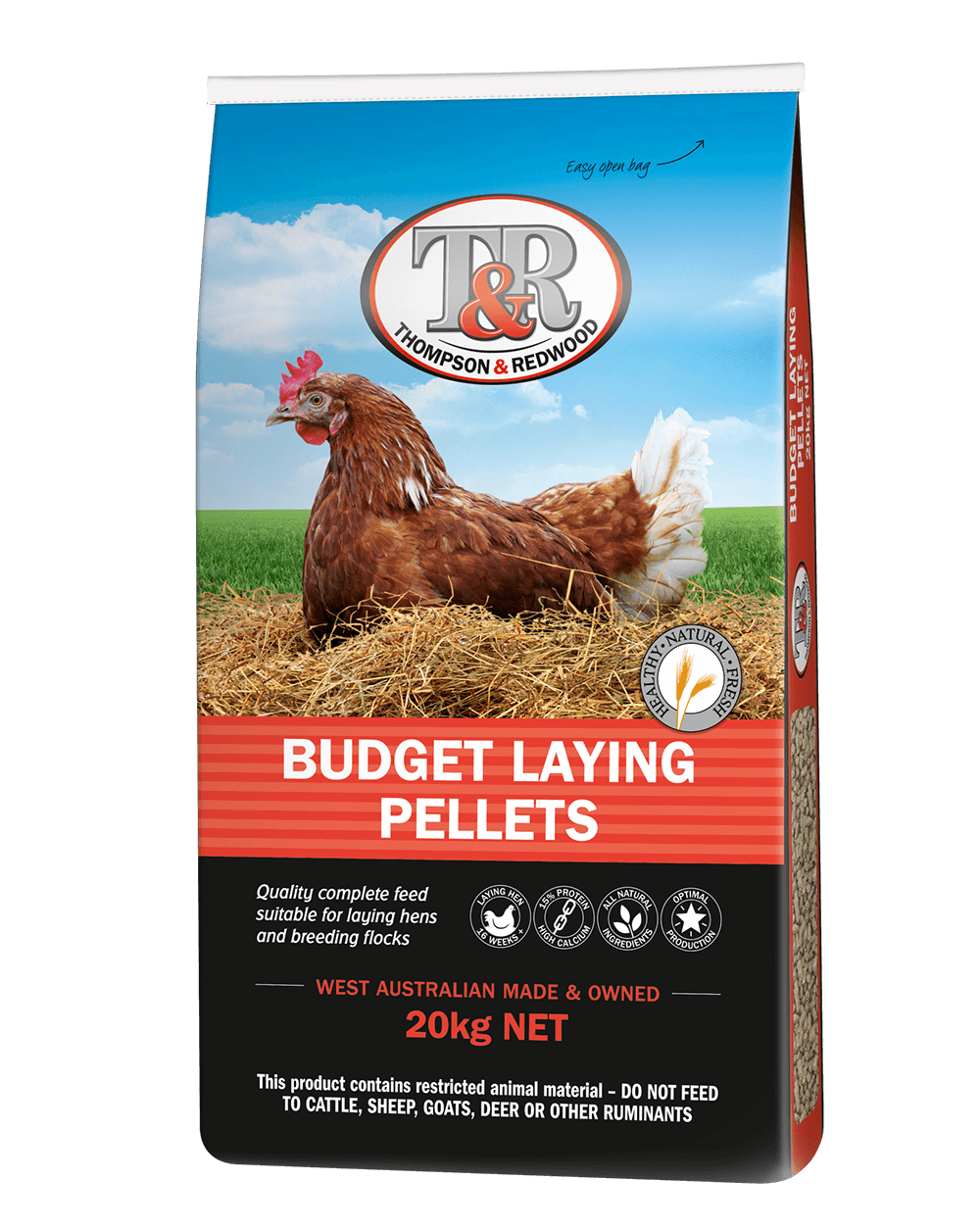
budget laying Pellets
Budget Laying Pellets are our complete and balanced laying feed that performs like our premium options when paired with a high quality scavenging and scrap diet.
Containing minimum 15% protein and 4.1g of calcium to support optimum health and laying.
Vegetarian feed
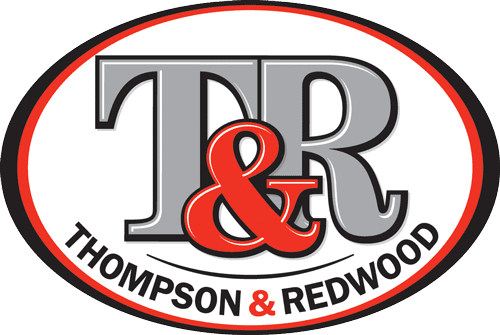


No Comments